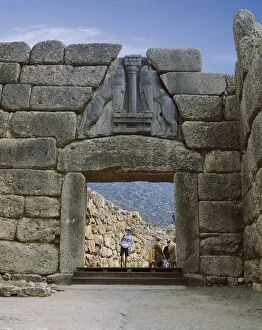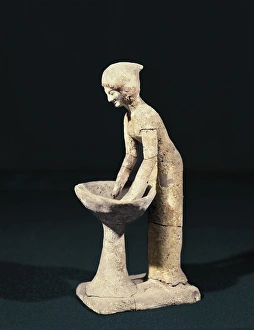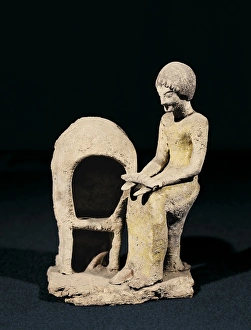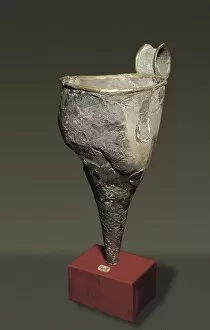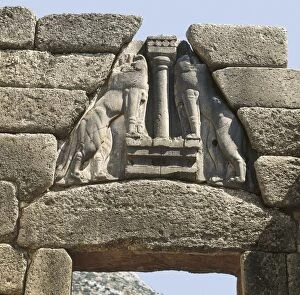Mycenaeans Collection
The Mycenaeans, an ancient civilization in Greece, left behind a rich legacy of art and architecture
All Professionally Made to Order for Quick Shipping
The Mycenaeans, an ancient civilization in Greece, left behind a rich legacy of art and architecture. One notable example is the Palace of Nestor near Pylos, dating back to 1300-1200 BC. This impressive structure showcases the grandeur and sophistication of Mycenaean architecture. Another iconic symbol of the the Lion Gate in Peloponnese's Arcadia region. Built around the 14th century BC, this monumental entrance stands as a testament to their power and influence. Mycenaean art also includes intricate figurines like the Figure of Woman in the Kitchen from ca. 1500-1100 BC. This sculpture depicts daily life activities and provides insight into their domestic practices. Warrior Head, another masterpiece of Mycenaean art, portrays strength and valor through its detailed craftsmanship. It serves as a reminder of their military prowess during that era. Gold Rython discovered from the Fourth period (16th century BC) exemplifies their mastery in metalwork. Its exquisite design reflects both artistic finesse and cultural significance. Jewelry was also highly valued by the Mycenaeans, as seen in objects like Silver Rython found in Attica. These precious adornments not only showcased wealth but also reflected their aesthetic sensibilities. Returning to architectural marvels, we revisit The Palace of Nestor once again - an enduring symbol of Mycenaean culture located in Peloponnese's heartland. Its ruins provide glimpses into royal life during 1300-1200 BC. These artifacts and structures offer us a glimpse into the fascinating world of the Mycenaeans - a civilization characterized by artistic brilliance, military might, and architectural splendor that continues to captivate our imagination today.


